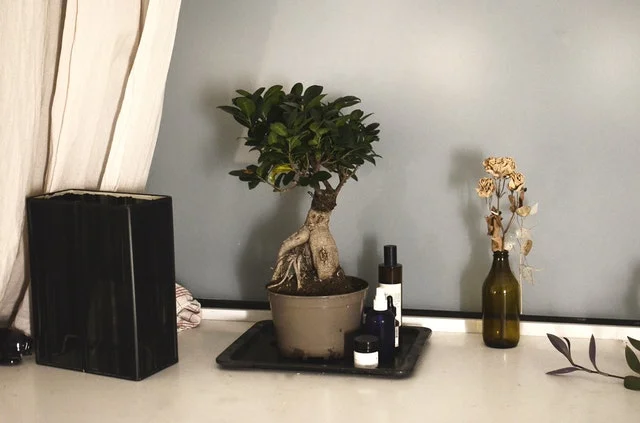Table of Contents
Introduction
the Ficus Retusa is a green woody plant, very popular in Bonsai. It is found in the Malay Archipelago and region. It can grow to 10metres or 33 feet and has been widely used in streetscapes because it is evergreen and broad-headed.
However, over recent years the massive roots have come up through the paving causing trip hazards, so it is best relegated to parks and green places. Great for shade, as the canopy is so dense that it keeps the sun out on hot days.
How to Care for Ficus Retusa
Ficus Retusa is also known as Cuban Laurel, can be grown in a large pot. This way you can move it indoors in winter, and outdoors during summer.
The Florida University suggests that the Ficus Retusa makes a good indoor plant with few pests and infestations.
Apply an indoor plant fertilizer to your plant during the winter months, avoiding contact with the stem, in case the fertilizer burns it. Wipe down the leaves with a damp cloth to remove dust from the plant.
What does Your Ficus Retusa Require?
Ficus Retusa has what are called glabrous, long leaves, and large red/gray bark dotted with flecks these are called lenticels enabling supplementary gas exchange through the bark to occur.
Therefore it is important that your plant gets some outdoor time, in good weather. Being indoors all the time will deprive it of the fresh air needed to meet its requirements for gaseous exchange.
As the tree grows bigger string-like roots may trail down from its branches, and you can cut these off without harming the plant, as they are a type of aerial root.
Light Requirements
Good light, but not too much direct sunlight is required for your plant. It also will not like a sudden drop in temperature, when the temperature suddenly drops by 10 degrees that drop could kill a young plant.
Temperature Requirements
If your Ficus Retusa is permanently outside. put it somewhere sheltered to combat temperature extremes, it won’t tolerate huge changes in temperature. If you know that a sudden frost is coming either bring it inside or wrap the plant in hessian to keep it warm overnight.
Soil Requirements
Ficus Retusa is actually a member of the mulberry family, so will do well in the same sort of soil used for berries. If it is remaining in a pot, or if you have a Bonsai version repot your plant every two years in Spring, well-drained soil.
Humidity Requirements
Your Ficus Retusa will like the humid air, as it grows indoors just as well as it grows outdoors, and this is unusual as most plants like one or the other.
Normally the leaves are large, except on a Bonsai.
Ficus Retusa Fruit
In the warm weather in July in the Northern Hemisphere, your Ficus Retusa will have small fig-like fruit.
In some places, if the plant is outdoors, this will attract the flying foxes or bats, and a whole colony of fruit bats will converge on your tree to feed, as this is what they eat!
How to Water your Ficus Retusa
Your Ficus Retusa plant has moderate watering needs but does not like wet roots. If you overwater your plant will start to lose its leaves, so only water when the soil is dry. Spray leaves regularly when indoors, with a mist sprayer.
Fertilizing your Ficus Retusa
Your Ficus Retusa will require fertilizing twice a year when kept in a pot indoors, and this is best done during Spring and late Autumn. keep your plant away from windy areas so that it stays in good health.
It should live for many years, and some trees live until well over 100 years.
Pests and Diseases of Ficus Retusa
Sometimes they are attacked by a red spider mite, and if the leaves turn yellow or spots appear this may be what is happening to your plant. Treat with an organic mite killer to fight the spiders.
Another disease that may affect your plant is mealybug or scale, and this does tend to occur when your plant is indoors, spray with a good plant white oil.
Pruning your Ficus Retusa
Your Plant won’t need pruning if it is a Bonsai, as Bonsai makes the leaves grow smaller. If it is a large tree, prune the aerial roots, when needed.
If your tree is in the garden, it will grow really tall, so get an Arborist in to trim the canopy back every few years, as this is not something that you should do yourself as you could damage the tree and all Ficus Retusa should be pruned every couple of years to remove damaged branches and keep them in shape.
When Planting a Ficus Retusa
- Don’t plant near to the house, remember a full-grown tree has very big long roots
- Remember when planting, that your tree will outlive you.
- Don’t plant outdoors in frost-prone areas, as your tree won’t survive.
- Water regularly until the tree is established.
Propagation of Ficus Retusa
You can propagate your Ficus Retusa from cuttings.
- Take hardwood cuttings from old wood
- Do this at the beginning of Summer.
- Place in a pot filled with good potting mix.
- Take about six cuttings ( they won’t all survive).
- Keep the cuttings warm, and not in direct sunlight, inside near a window is good.
- Keep away from the wind
- When they begin to grow roots plant them out.
- Keep watered until established.
- You may need to protect with plastic bottles with the bottom cut off, (mini-greenhouse).
Once your plants are propagated either plant out, or alternatively, pot them, and give them to friends as gifts, this will make a great present for someone with a big garden area.
Conclusion
The Ficus Retusa makes a lovely plant to have either in a pot or as a garden tree. It has numerous branches and will make a good climbing tree or even a tree to build a treehouse in for children.
Once you are in the tree, the foliage is dense and you can sit up there and watch the world go by.
Photo by Skylar Kang from Pexels


